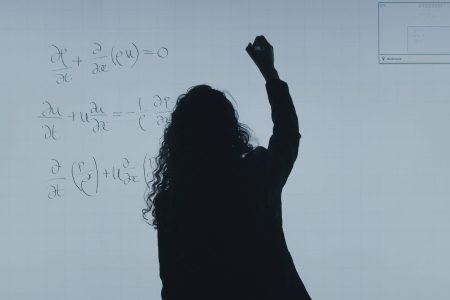
The science of happiness
Happiness depends on a number of things: genes, habits, and what’s going on in our lives at a specific moment in time. Here’s what you can do to be happier.

Migraines are a chronic neurological disease with intense headache attacks in one or both hemispheres, followed by:
If you notice at least 2 of these symptoms, it is very likely that you have migraine. But you should consult a neurologist to confirm the diagnosis.
Physical activity increases the pain. Pain attacks might occur from once per year to once per week and can last from 4 days to 3 days. Migraines affect 10% of the population. ⅔ are women under 45, due to the influence of sex hormones.
In addition to migraines, there are plenty of other headache types. They can be primary and secondary headaches. “Secondary” headaches are the symptoms of other diseases: flu and cold headaches, post-traumatic pain after head and neck injuries. They disappear during treatment for the primary ailment.
If the pain is not connected with some other disease – as is the case for migraines – it is considered a primary headache. The most common type of primary headache is the tension headache. It occurs if you have stress or problems with the cervical spine. This pain does not increase during physical exercise. It might cause loss of appetite without vomiting. The pain is either episodic – 3-4 times per week – or chronic – more than 15 days per month for half a year.
Cluster headaches are another type of a primary headache. They is quite rare: 1 case for 1000 people, among them 1 woman for 6 men. Cluster is a period of repeated attacks, which last from several weeks to several months. Usually, attacks appear at the same time every day. They are short, lasting from 15 minutes to 3 hours, but extremely painful – involving strong sensations around the eyes, tearing, reddening, and a runny or stuffy nose.
That depends on the type of migraine. A migraine without an aura starts immediately. A migraine without one is usually preceeded reversible visual and speech disorders and numbness before the attack. A “classic” migraine attack consists of 4 phases:
Also citrus, chocolate, wine, products with tyramine might cause an attack, however, these reactions are individual and not scientifically proved.
Stimulation of brain cells. Researchers used to believe spasms and expanding brain vessels to cause migraines. Nowadays they think that the cause of migraines is genetic, connected with a higher excitability of brain cells and the spreading of excitation waves.
Brain vessels become narrow. There is a lack of oxygen in nerve cells, which disturbs the process of positive ions coming in cells. This creates a potential sufficient to arouse other nerve endings. As a result, there is an excitation of sensitive trigeminal nerve fibers in the vessels of the brain and in the meninges.
They deliver impulses to the cortex, which is responsible for perceiving pain. The path of painful impulses goes through the nucleus that regulates physiological functions. This causes nausea, vomiting, yawning, watering, loss of appetite, tiredness, irritability, and depression during migraine.
Additional bunches of the trigeminal nerve go into the brain cortex that controls hearing, vision and smell, which causes the aura, and specific headache. Some researchers say that migraine pain might be caused by the improper functioning of neurons responsible for pain treatment. However, in this case, the cause of excitation of such neurons is the excitation wave in the brain.
Migraines without an aura are not dangerous, but those with an aura potentially are. The visual and speech disorders that occur during migraine are reversible. This is why many people refuse to treat the disease.
However, a migraine with an aura is different. Researchers observed 27,798 women for 12 years and came to the conclusion that migraines with an aura increase the risk of a heart attack by more than 50 percent, and their risk of stroke more than by 200 percent. There is other research that showed a connection of migraine with aura and cardiovascular diseases. However, the cause is not the migraine itself, but the blood supply disorders which are connected with it. To reduce the risk of a heart attack or stroke you should take measures to prevent cardiovascular diseases.
There is evidence that migraines also change the function and structure of the brain. So it is obvious that a migraine is not merely a pain syndrome, but a series of significant changes taking place inside the brain. So preventive measures and treatment are essential.
You should reduce the excitability of brain cells. There are three purposes of migraine treatment:
There is medication that can reduce migraine pain during attacks and researchers are working on reducing brain excitability.
Migraine attacks trigger stress, sleep disorders, hunger, and overeating. This means that the reason for the brain’s excitability might be a sensitivity to changes in the metabolism, which is regulated by the hypothalamus. That is why doctors often prescribe medications that affects receptors of ghrelin, leptin, and orexin, help to control weight, stress, and sleep, and prevent overeating and obesity.
Changes in the structure and functions of the brain might occur in different parts, which makes the treatment of migraines a difficult process. We recommend to visit a doctor to find the right treatment.
Control your lifestyle. It will reduce the probability of metabolism disorders. General recommendations to help stabilize the functions regulated by the hypothalamus:
Monitor your health with Welltory measurements and migraine diaries, like Migraine Diary or Migraine Buddy to clarify the causes of your migraine. This will help you find correlations between attacks and level of stress and energy, sleep quality, and nutrition, and determine what exactly causes a headache. One’s general susceptibility to migraines reduces only with age, but you can control the frequency and duration of painful attacks.
Welltory Team, 23 Dec. 2021

Happiness depends on a number of things: genes, habits, and what’s going on in our lives at a specific moment in time. Here’s what you can do to be happier.

Scientists have found out that ergonomic office desks and chairs help to improve overall health, boost productivity and increase concentration. Find out how you can improve your workplace.

Find out how to track air quality, humidity and noise levels to optimize your performance and to avoid frequent colds.

Self-tracking and lifelogging is a great way to learn more about yourself so you can be healthier, happier, and more productive.
 App Store
App Store
 Google Play
Google Play
 Huawei AppGallery
Huawei AppGallery
 Galaxy Store
Galaxy Store







